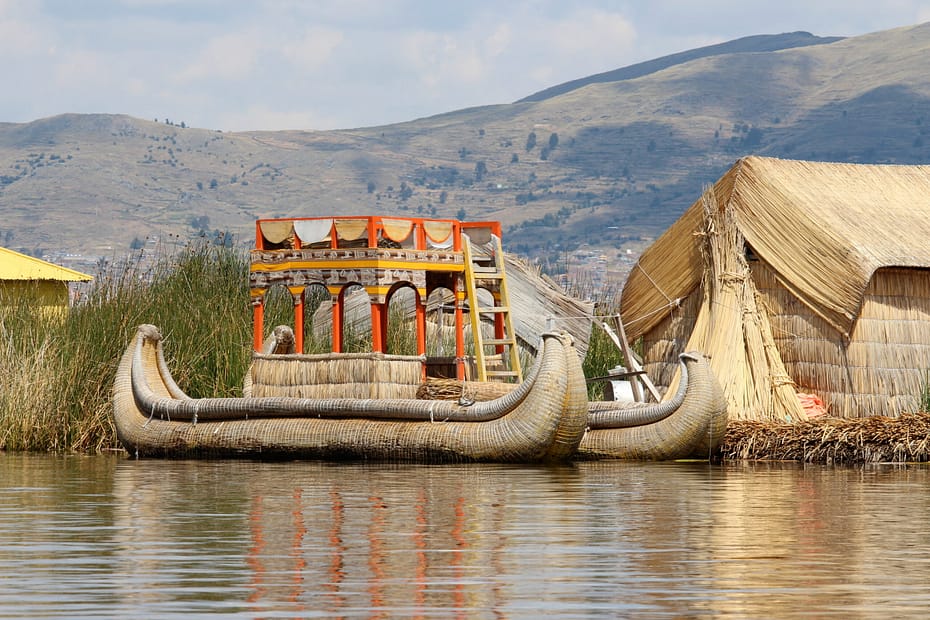On the highest lake in the world, some twelve-and-a-half thousand feet above sea level, the fairytale-like Islas de los Uros sit peacefully and majestically on the shimmering surface.
These small, inhabited islands are entirely made of reeds and float on the Peruvian side of Titicaca, an enormous lake stretching across the border of Peru and Bolivia.

Without a doubt, this is one of the most fascinating and innovative ways to escape persecution.
You see, the islands were originally engineered 500-years-ago by the indigenous Uros people in an attempt to avoid clashing with the Inca. As the powerful Inca Empire grew and began to get generally uncomfortable for anyone not-Incan, the Uros began to construct floating islands out of totora reeds, enabling them to drift out to safety when the threat loomed.
Now I can’t imagine paddling an island would be that much fun but, on the flip-side, it does sound better than a colourfully religious Incan death. So, in the end, life is about choices.

But how does a floating island work, you ask?
Good question.
The islands themselves are made by piling layers of totora reeds on top of one another in a criss-crossing pattern. The reeds themselves are lightweight and water-resistant… and very conveniently native to the shores of Lake Titicaca. As time goes by, the reeds on the bottom of the island rot, disintegrate and fall away, meaning that every few months, those that live on the island must cut more reeds and lay down a fresh layer on the surface. And yes, this means that walking on the island is a bit “squishy” (but not wet) as one’s feet sink slightly into the sun-dried thatch.

What we may have found even more fascinating was the fact that EVERYTHING on the island was made of reeds: the houses, the boats, the tables, the chairs, the beds… everything! And why not? The totora reed is strong, durable, and surprisingly flexible, with a “no-kinking” quality.


For two days we were hosted by a beautiful family who took complete care of us. They cooked delicious meals that included potatoes from their garden (soil that was painstakingly brought from the shore in boats). They took us fishing. And they even let us try our hand at reed-harvesting (which we were especially terrible at).


For our two-day stay, we fell in love with their generosity and genuine hospitality.

Now, hundreds of years after the necessity of escape from the Incan onslaught, there are more than 100 islands that have been constructed, with over 1000 inhabitants living on them.
This is more than a visit; this is an experience.
You can book online. You leave from the city of Puno. Stay overnight, if time allows.


